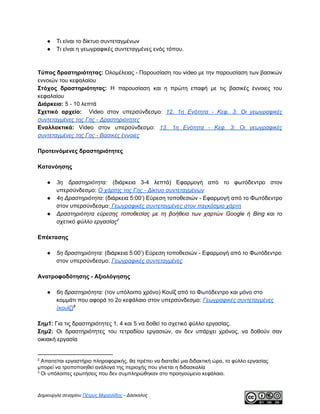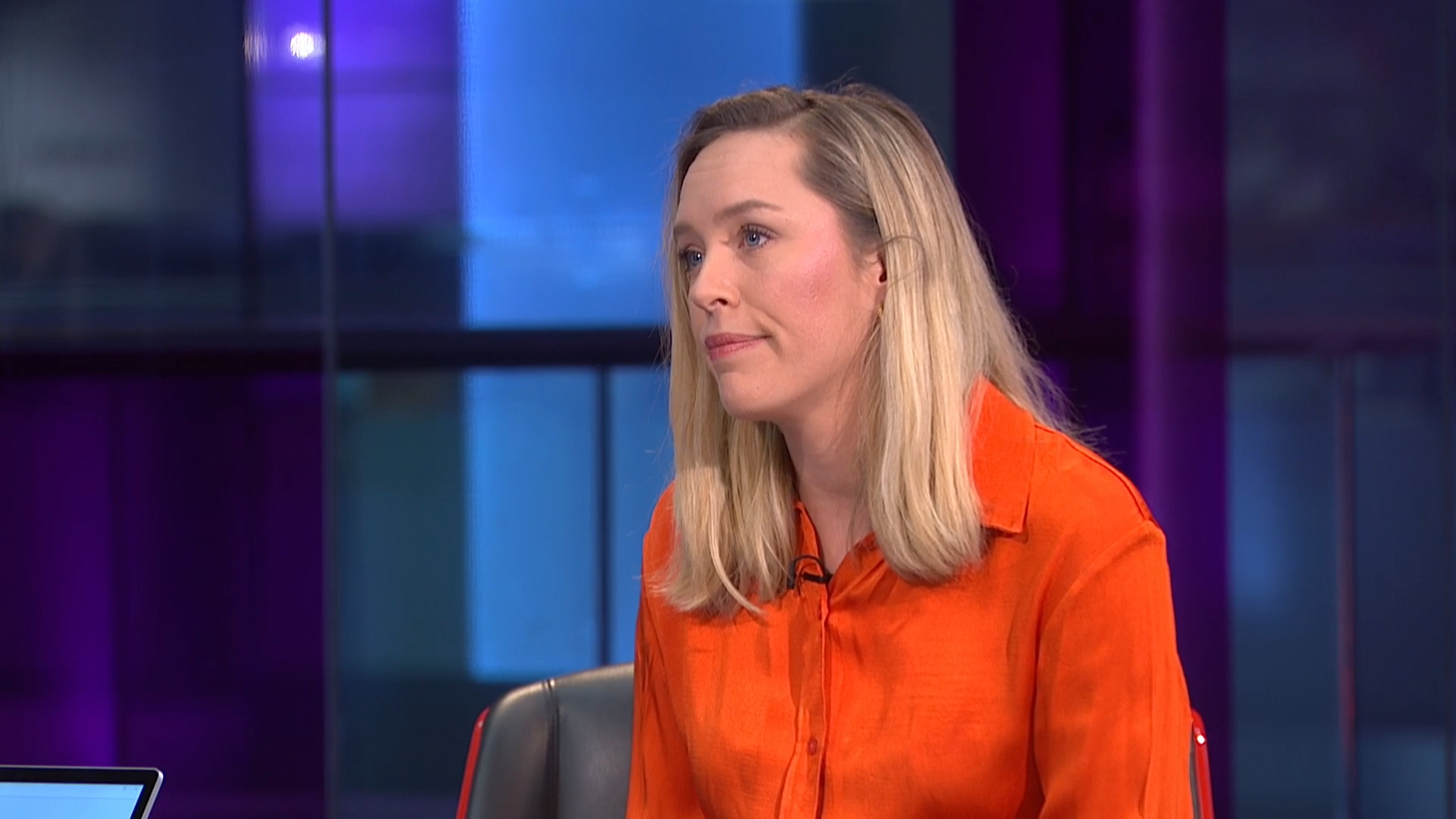The 2025 Plunge Of D-Wave Quantum (QBTS): Causes And Implications

Table of Contents
Technological Challenges Facing D-Wave Quantum
D-Wave Quantum, a pioneer in adiabatic quantum computing, faces significant technological hurdles that could contribute to a decline in its stock price.
Competition from other quantum computing companies
D-Wave's adiabatic quantum computing approach differs significantly from the gate-based models pursued by competitors like IBM, Google, and IonQ. These competitors possess several perceived advantages:
- Faster Gate Operations: Gate-based quantum computers generally boast faster gate operations, allowing for quicker computation times.
- Wider Algorithm Applicability: Gate-based models are theoretically adaptable to a broader range of algorithms, offering greater versatility.
- Larger Developer Community: Gate-based platforms benefit from larger, more established developer communities, resulting in greater software support and algorithm development.
D-Wave's limitations in these areas could hinder its ability to compete effectively, potentially impacting its market share and investor confidence. For example, IBM's consistent advancements in qubit count and coherence times directly challenge D-Wave’s market position, impacting the perceived value proposition of QBTS.
Scaling limitations and the challenges of building larger, more powerful quantum computers
Scaling adiabatic quantum computers presents unique engineering difficulties. D-Wave's current qubit counts, while impressive, lag behind the ambitions required to tackle truly complex, real-world problems.
- Qubit Connectivity: Achieving efficient connectivity between a vast number of qubits is a major bottleneck.
- Error Correction: Implementing robust error correction mechanisms in large-scale adiabatic quantum computers is extremely challenging.
- Cost Prohibitive Scaling: The research and development costs associated with scaling D-Wave's technology exponentially increase with each additional qubit.
These scaling limitations directly affect D-Wave's capacity to solve commercially relevant problems, potentially hindering its growth and attractiveness to investors.
Software and algorithm development hurdles
Developing quantum algorithms optimized for D-Wave's unique architecture is complex and resource-intensive.
- Specialized Expertise Required: This requires highly specialized expertise, which is currently in short supply.
- Limited Software Ecosystem: D-Wave's relatively smaller developer community limits the availability of pre-built software tools and libraries.
- Algorithm Porting Challenges: Adapting classical algorithms to run efficiently on D-Wave's quantum annealers presents significant challenges.
These software and algorithm development hurdles restrict the accessibility and usability of D-Wave's technology, impacting its potential market penetration.
Market and Financial Factors Contributing to a Potential QBTS Decline
Beyond technological challenges, market and financial factors could significantly influence QBTS's stock price.
Investor sentiment and market volatility in the tech sector
The overall investor sentiment towards the tech sector and emerging technologies like quantum computing plays a critical role.
- Risk Aversion: Periods of economic uncertainty or market volatility can lead to increased risk aversion, negatively impacting investments in high-risk, early-stage companies like D-Wave.
- Shifting Investor Focus: Investor interest might shift towards other promising technologies, diverting funds away from quantum computing.
- Macroeconomic Conditions: Broader economic factors, such as recessionary pressures, can significantly impact QBTS stock price regardless of D-Wave’s performance.
Competition for funding and the challenges of securing further investment
Securing further funding is crucial for D-Wave’s continued growth and development. The competitive landscape for venture capital and government grants is fierce.
- Demonstrating Profitability: Failure to demonstrate a clear path to profitability could deter potential investors.
- Competitive Funding Rounds: Attracting investment in the face of numerous other promising quantum computing startups will be increasingly challenging.
- Financial Performance: D-Wave's financial performance, including revenue growth and profitability, directly impacts investor confidence and the likelihood of securing future funding.
Failure to meet projected milestones and market expectations
Failing to meet projected milestones can significantly erode investor confidence.
- Missed Deadlines: Missing deadlines for key technological advancements or market penetration goals can negatively impact stock valuation.
- Underwhelming Results: Underperforming against expectations in key metrics like qubit count, algorithm performance, or customer acquisition can lead to a decline in QBTS stock price.
- Negative Publicity: Negative news or setbacks, such as delays or technical glitches, can trigger a sell-off and undermine investor confidence.
Implications of a Significant QBTS Stock Price Decline
A substantial drop in QBTS's stock price would have wide-ranging implications.
Impact on the quantum computing industry's overall development
A significant decline in D-Wave's valuation could create a ripple effect throughout the quantum computing industry.
- Reduced Investment: This could discourage investment in quantum computing research and development overall.
- Industry Consolidation: It might accelerate industry consolidation through mergers and acquisitions, potentially leading to a less diverse landscape.
- Shifted Funding Priorities: It could shift funding priorities towards other more established quantum computing companies or technologies.
Consequences for D-Wave Quantum's future operations and research efforts
A stock price plunge could severely impact D-Wave's operations and future research.
- Layoffs and Restructuring: The company might be forced to undertake cost-cutting measures, including potential layoffs and restructuring.
- Curtailed R&D: Reduced funding could lead to a significant curtailment of D-Wave's research and development activities.
- Strategic Partnerships/Acquisitions: To remain viable, D-Wave might pursue strategic partnerships or acquisitions, altering its long-term trajectory.
Effect on the broader adoption of quantum computing technologies
A decline in D-Wave's fortunes could dampen the broader adoption of quantum computing technologies.
- Slower Adoption: It could create a perception of risk and uncertainty, potentially slowing down the adoption of quantum computing solutions by businesses.
- Public Confidence: Negative news surrounding D-Wave could erode public confidence in the potential of quantum computing as a whole.
- Industry Setbacks: A significant setback for a prominent player like D-Wave could lead to broader industry setbacks and delayed progress in the field.
Conclusion: Navigating the Uncertain Future of D-Wave Quantum (QBTS)
A hypothetical significant drop in QBTS stock price in 2025 would stem from a confluence of technological challenges, market pressures, and financial factors. Understanding these risks and challenges is crucial for navigating the uncertain future of D-Wave Quantum and the quantum computing industry. This analysis highlights the need for continued innovation, strategic adaptation, and investor prudence in this rapidly evolving field. To stay informed, conduct further research on D-Wave Quantum's future, engage in QBTS stock analysis, and carefully consider the long-term implications of quantum computing investments.

Featured Posts
-
 Efimereyontes Giatroi Patras 12 And 13 Aprilioy Odigos Eyresis
May 21, 2025
Efimereyontes Giatroi Patras 12 And 13 Aprilioy Odigos Eyresis
May 21, 2025 -
 Alterya Acquired By Chainalysis A Strategic Move In Blockchain And Ai
May 21, 2025
Alterya Acquired By Chainalysis A Strategic Move In Blockchain And Ai
May 21, 2025 -
 Kolme Muutosta Huuhkajien Avauskokoonpanoon Kaellman Sivussa
May 21, 2025
Kolme Muutosta Huuhkajien Avauskokoonpanoon Kaellman Sivussa
May 21, 2025 -
 Dexter Returns A Look At The Resurrected Villains
May 21, 2025
Dexter Returns A Look At The Resurrected Villains
May 21, 2025 -
 Is The Goldbergs Ending Soon A Look At The Future
May 21, 2025
Is The Goldbergs Ending Soon A Look At The Future
May 21, 2025
Latest Posts
-
 Late Goal Secures Draw For Lazio Against Reduced Juventus
May 22, 2025
Late Goal Secures Draw For Lazio Against Reduced Juventus
May 22, 2025 -
 Lazio And Juventus Draw In Tense Serie A Match
May 22, 2025
Lazio And Juventus Draw In Tense Serie A Match
May 22, 2025 -
 Wife Of Tory Politician Remains Imprisoned For Anti Migrant Outburst In Southport
May 22, 2025
Wife Of Tory Politician Remains Imprisoned For Anti Migrant Outburst In Southport
May 22, 2025 -
 8 6 Thriller Tigers Prove Doubters Wrong Against Rockies
May 22, 2025
8 6 Thriller Tigers Prove Doubters Wrong Against Rockies
May 22, 2025 -
 Delayed Ruling Ex Tory Councillors Wifes Racial Hatred Tweet Appeal
May 22, 2025
Delayed Ruling Ex Tory Councillors Wifes Racial Hatred Tweet Appeal
May 22, 2025
